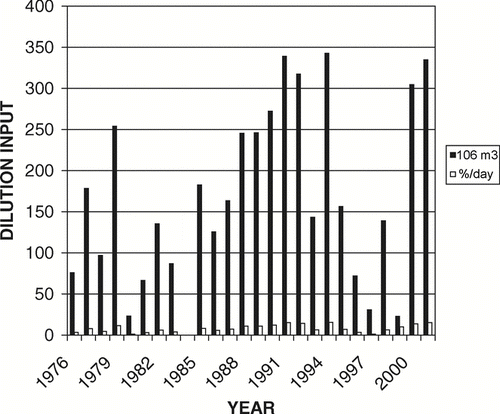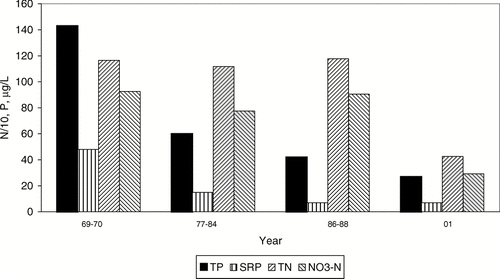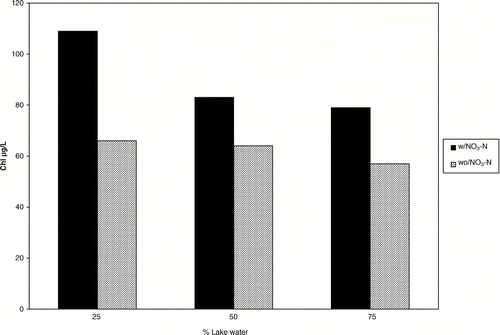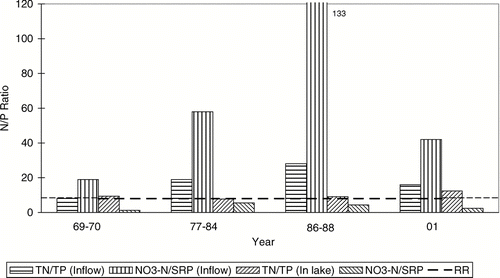Figures & data
Figure 1 Moses Lake showing inflow of Columbia River dilution water from the East Low Canal (1) entering via Rocky Coulee Wasteway (2) into Crab Creek (3) and then into Parker Horn (5). Upper Parker Horn (5) water was pumped at times into Upper Pelican Horn (19). Water sampling sites are shown by number and solid lines for transects.

Figure 2 The quantity of Columbia River dilution water in 106 m3 (solid bars) added during spring and early summer to Parker Horn of Moses Lake from the East Low Canal through Rocky Coulee Wasteway and Crab Creek. Clear bars are water exchange rates for the Parker Horn volume in %/day for the 6-month dilution period, and whole-lake volume is 154 × 106 m3.

Figure 3 Average April–September in-flow concentrations of P and N to Parker Horn of Moses Lake before (1969–1970) and after the start (1977) of systematic dilution. N concentrations were divided by 10 to conform to scale for comparison.

Figure 4 Average May–September chlorophyll and nutrients in Parker Horn and South Lake of Moses Lake before (1969–1970) and after the start (1977) of systematic dilution. N concentrations were divided by 10 to conform to scale for comparison.

Table 1 Net yield of cyanobacteria (Anabaena, Aphanizomenon and Microcystis) in colonies/mL in 100 L plastic bags suspended in Moses Lake in August 1970 diluted with low-nutrient Columbia River water with and without NO3-N added to lake water at 1 mg/L. Bag water was exchanged at 10%/day with water of the initial compositions during the 13-day experiment (from CitationBuckley, 1971).
Figure 5 Response of algae, as mean chl of four consecutive highest values, to low-nutrient Columbia River water addition to 100-L plastic bags in situ at 25, 50 and 75% lake water, with NO3-N added to lake water at 1 mg/L, resulting in initial NO3-N of 751, 502 and 232 μg/L, respectively. Controls (cross hatched) were with dilution water but no NO3-N added. NO3-N concentration decreased to an averaged of 4 μ g/L in all bags after 13 days of the experiment (CitationBuckley 1971).

Figure 6 Average N:P ratios in the inflow (April–September) and in Parker Horn and South Lake of Moses Lake (May–September) before (1969–1970) and after the start (1977) of systematic dilution. The dashed line (RR) is the Redfield ratio.

Figure 7 Conformance of May–September means for chl, TP (P) and TN (N X 1/10 for scaling) to a line with slopes of 0.35 for chl:TP and 0.035 for chl:TN in Parker Horn and South Lake of Moses Lake before (1969–1970) and after the start (1977) of systematic dilution. High internal P loading accounts for nonconformance in 1985.
